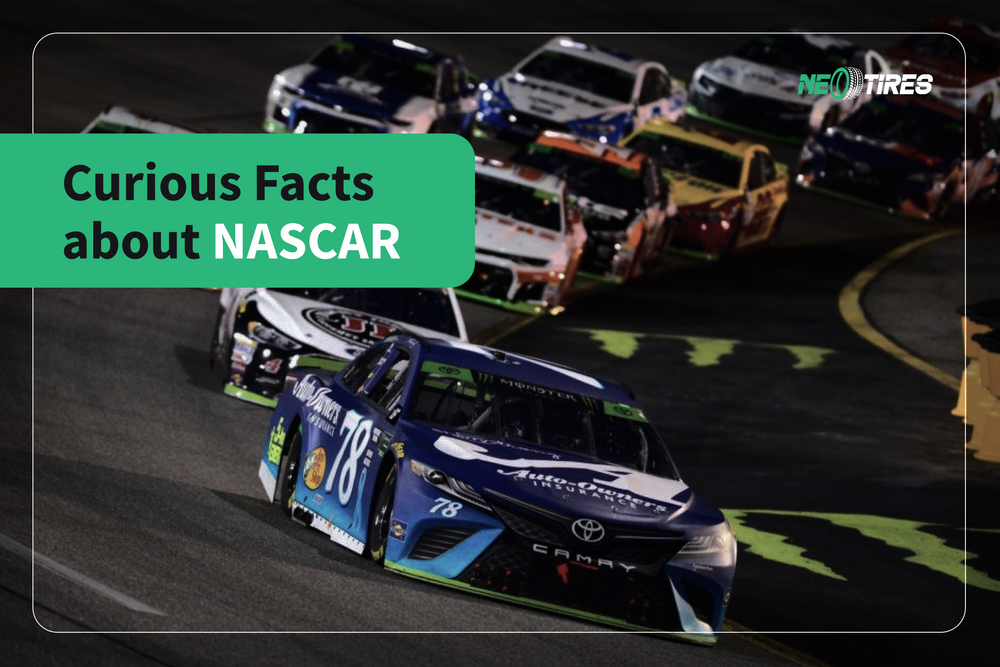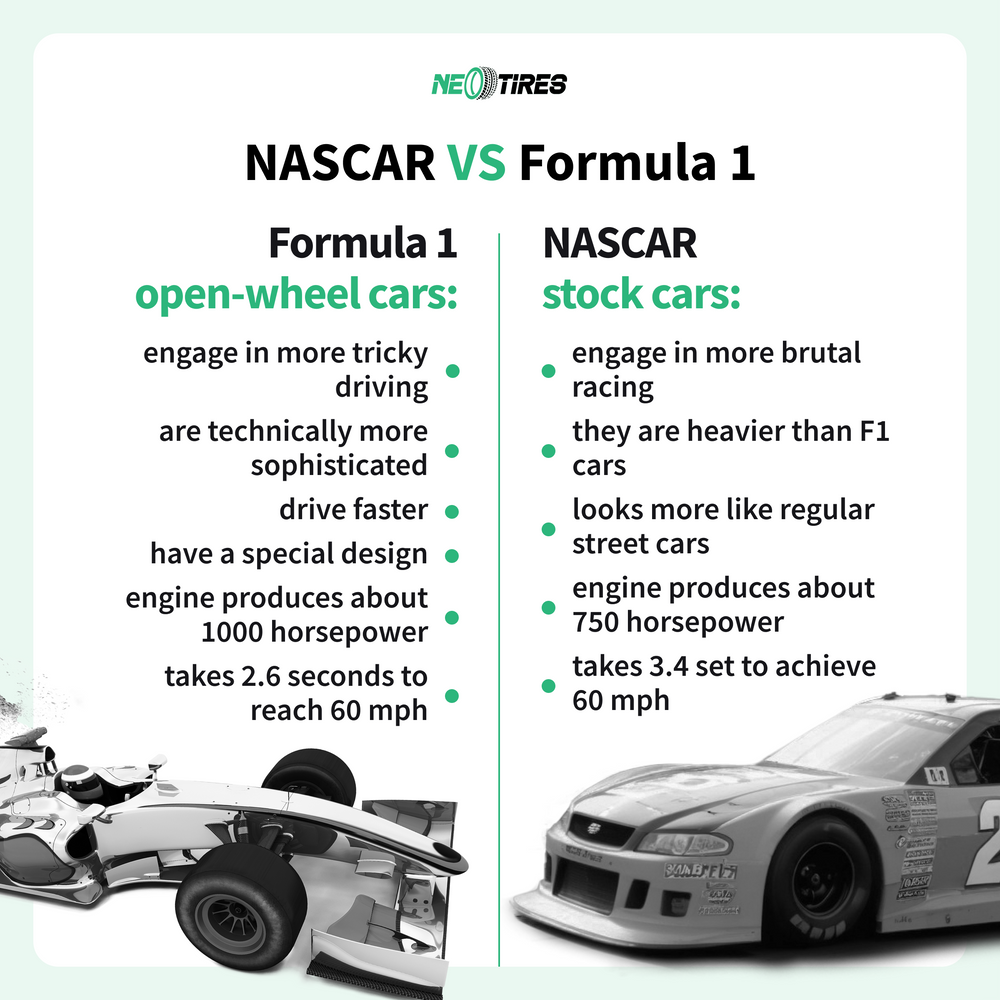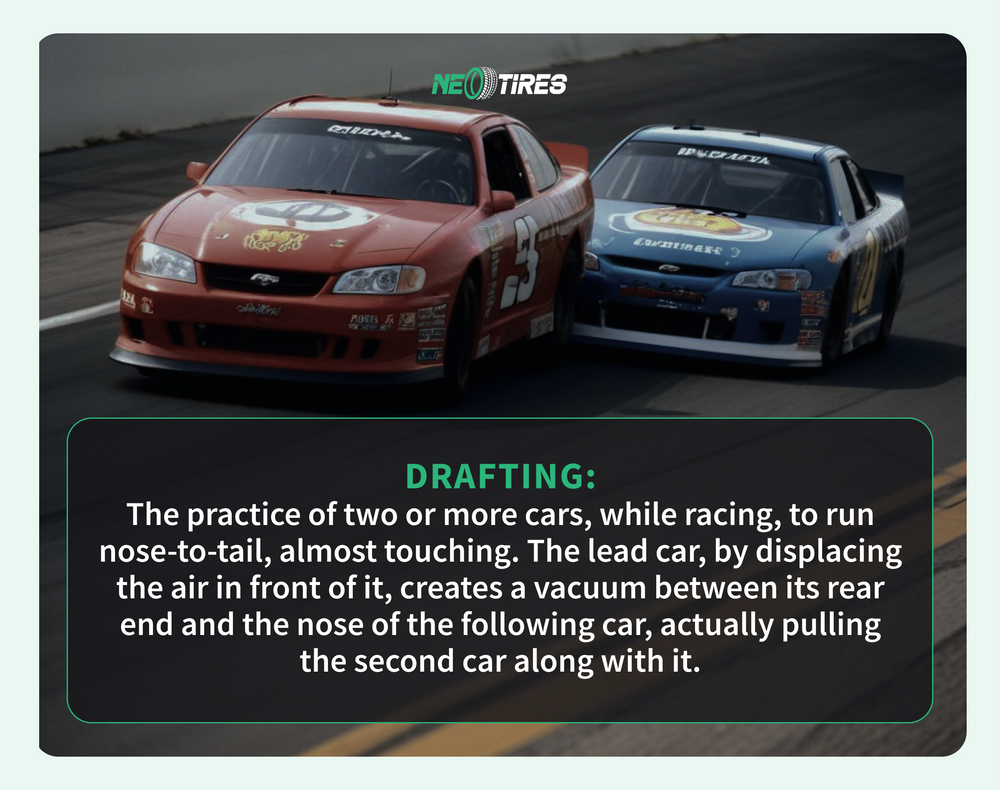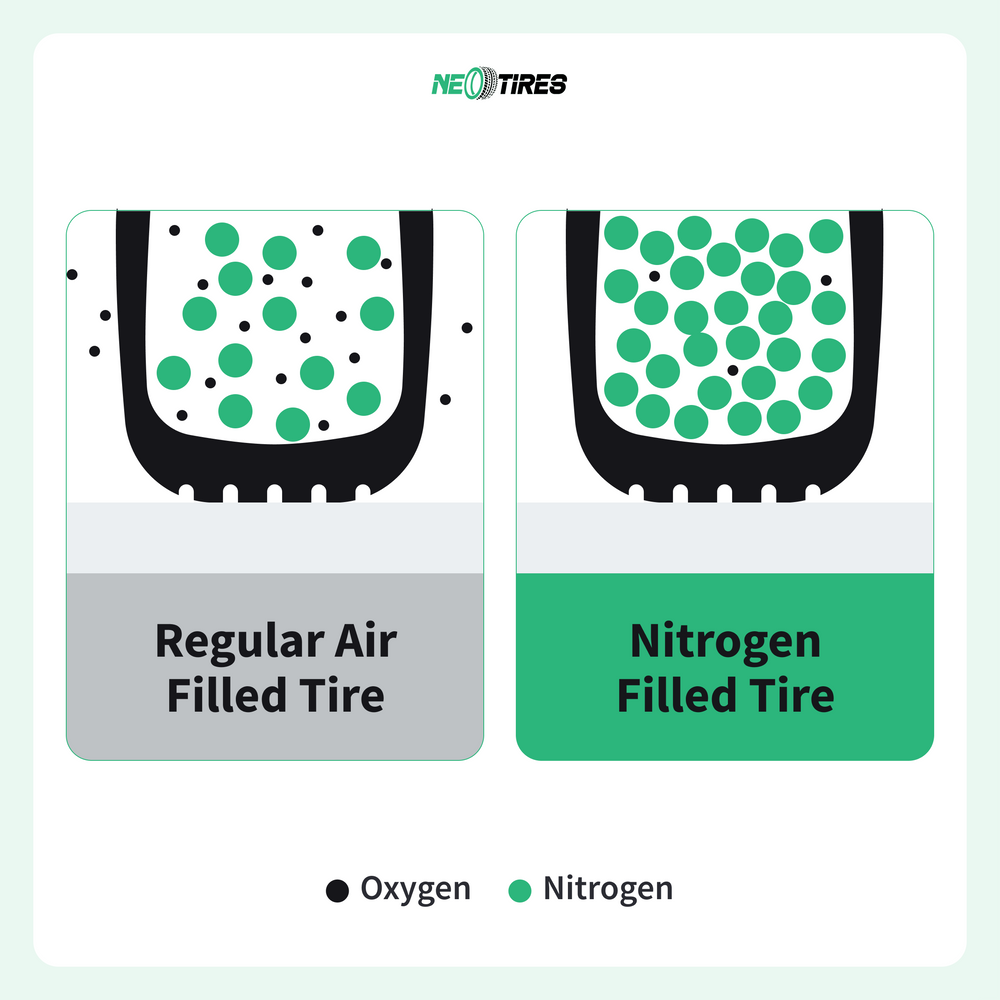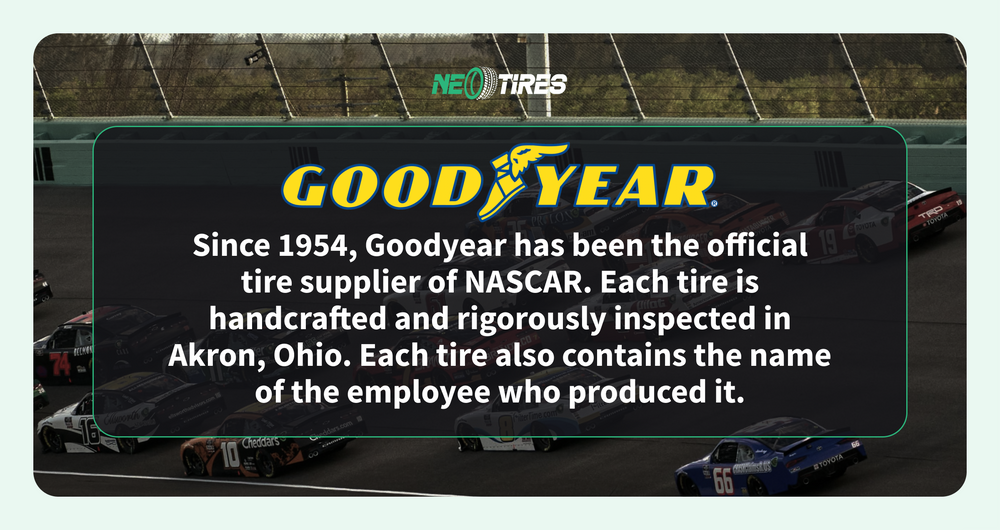If you are a big fan of spirited driving, you must be familiar with NASCAR. This term is an abbreviation for the National Association for Stock Car Auto Racing, which captures the attention of millions of fans worldwide annually. This thrilling yet adrenaline-driven activity has a curious history that evolved from a somewhat clandestine activity to an official sport in the United States.
NASCAR: Historical Background
NASCAR was born in the United States at the beginning of the 20th century. The association gathers spirited drivers passionate about thunderous engine roars and high adrenaline in their veins due to high speed and wild competitive spirit. Not only are the drivers obsessed with these adrenaline-fueled races, but also the spectators who follow all the high-speed rivalry with their hearts in their mouths.
Today, NASCAR is one of the world's most famous motorsports and one of the top in the United States. It is as prestigious and attractive as the NBA and the NFL. This organization has successfully spread all over the globe. Thus, there are around 1,200 NASCAR races in various countries, and the fan community reaches over 75 million people in the United States alone.
The evolution of NASCAR raises plenty of curiosity. As the name suggests, the association revolves around stock vehicles, i.e., production-model cars. However, they gradually moved to cars specifically crafted for racing, keeping a stock vehicle's foundation.
This is what differentiates NASCAR cars from Formula 1 cars. While F1 cars are lighter and more aerodynamic, NASCAR cars resemble street racing cars with fenders and bumpers.
NASCAR competition is all about the driver's and crew chief's skills. All the cars in the race move extremely close to each other at high speed. So, not only must the car be equipped with a powerful engine, but the driver must also be highly reactive. This key ability helps keep the vehicle's agility and maneuverability and avoid collisions or impacts with the vehicle in its highly close vicinity.
How Did It All Begin?
The most curious thing in NASCAR's entire history is that it appeared as a consequence of Prohibition. Yes, exactly,it's the prohibition law from 1920 that forbade the import, sale, and manufacture of alcohol. Many of those who still tried to escape this law had to make sure that they could outrun the sheriffs, revenuers, or whoever could have pursued them.
In this sense, those who did not give up "moonshining," together with those who distributed it illegally, began to invest massively in developing their cars. They had to upgrade their engines to such a level that no sheriff or highway patrol could reach them in an attempt to catch them with some illegal alcohol in the trunk. That's when the cars started to become increasingly spirited and wild, while their external appearance continued to resemble that of an ordinary sedan vehicle.
Gradually, the improvement in the cars' capacity awakened the drivers' interest in competition. They began to compare the power of their engines, which increasingly satisfied the spectators. Towards the end of the 1930s, these competitions grew to massive standards, supported by administrative bodies. Thus, the association became official and organized on a grand scale in Daytona Beach, Florida.
At the end of the day, "it wasn’t gasoline—but moonshine—that fueled the growth of stock car racing and led to the rise of NASCAR". That's how historical references describe this event; we can't agree more.
Why Do NASCAR Cars Move In Such Tight Contact?
The car follows closely behind the other, using the advantages of reduced air resistance or frontal resistance created by the leading car. This aerodynamic phenomenon reduces wind resistance for the towed car, allowing it to develop higher speeds and increase fuel efficiency compared to autonomous driving.
Thus, the body's aerodynamics and the ability to control them became a real tactical track. Techniques such as close contact of the front wing with the opponent's rear wing might lead to a sharp imbalance of the rear axle, which forces the car in front to reduce speed. Here, not only speed but also how the driver controls the aerodynamics and the overall car handling are decisive factors.
Now that you know more about this adrenaline-driven competition, let's talk about some lesser-known facts about it. Feel free to complete the list of facts below in the comment section if we might have missed anything.
1. NASCAR Drivers' Necks Are Particularly Affected
According to the laws of physics, high-speed racing and mega-tight turns strain the drivers' bodies. Therefore, the drivers of these competitions must be in excellent health to withstand emotional and physical stress.
Turns out that their necks are particularly exposed to stress due to the impressive acceleration forces. By the way, acceleration forces can reach 2GS, braking forces - 5Gs, and cornering forces - between 4 and 6 Gs. In all these maneuvers, the neck muscles (like other body parts) are exposed to increased tension.
2. NASCAR Research And Development Center
This association's large Research and Development department is located in North Carolina. It brings together professional mechanics, engineers, and technicians to upgrade existing technologies and develop new ones to improve the capabilities of NASCAR cars.
NASCAR's evolution pays significant tribute to this department because new materials, prototypes, and engines are invented to enhance this competition. Some examples include, but are not limited to, aerodynamic design improvements, safety features, or performance updates like those in "Cars of Tomorrow" or "Gen-6" models.
3. NASCAR Has Gone "Green"
One of NASCAR's ambitious projects is its Green Initiative. This one focuses on reducing the negative impact on the environment by minimizing waste, increasing sustainability, and cutting energy consumption.
For this purpose, NASCAR has developed a series of changes and revisions. Some of these involve the replacement of traditional fuel with biodiesel or ethanol alternatives. These are more environmentally friendly. At the moment, NASCAR cars are fueled with Sunoco Green E15. This fuel is a mixture of 15% ethanol and 85% gasoline, providing performance and environmental benefits.
Also, an increased focus goes on tire recycling. Lastly, the association is involved in massive tree planting with its partners. Thus, NASCAR tries to compensate for the environmental damage caused by the respective sport. Learn more about Tire Recycling in our comprehensive guide.
4. NASCAR Has Its Own "Lewis Hamilton"
We all know the Formula 1 hero who wrote history in this sport. It is about Lewis Hamilton, who has had a little over 100 wins throughout his career. By the way, this is only a few wins ahead of another F1 hero - Michael Schumacher. The latter is still synonymous with ultimate F1 performance. But unfortunately, fate decided an unforeseen and somewhat tragic turn for the end of his career.
Either way, NASCAR boasts an absolute champion who is often called The King. It's about Richard Petty, who boasts an impressive portfolio of achievements. He recorded over 200 races, including 7 NASCAR Cup Series Championships. In the same context, the pilot holds the record for top-five finishes and most poles. It's no wonder why this driver is in the NASCAR Hall of Fame.
5. NASCAR Cars Run On Special Tires
NASCAR competition is all about performance, durability, wild spirit, and heat resistance. Obviously, these cars must run on special tires, and the association pays particular attention to the tires that are mounted on them.
The only similarity between traditional and NASCAR tires is that they are radial. Otherwise, the association requests specific changes from tire manufacturers to meet the strenuous demand. First, tires should be as easily replaceable as possible, provide ultimate traction, resist excessive heat, and ensure phenomenal speed.
Nitrogen Instead of Compressed Air
First, most teams opt for nitrogen instead of regular air. Nitrogen does not offer as many benefits for ordinary vehicles as it does for racing cars. NASCAR cars' tires are exposed to a superlative heat build-up, and regular air tends to expand as the heat increases. As a result, the tire can blow out or fail at any time.
On the other hand, nitrogen keeps the pressure constant in tires. This means that their pressure is unlikely to fluctuate, ensuring better control and predictability during races.
Outer and Inner Tires
Depending on the type of race, NASCAR tires have different constructions. For example, the association asks tire manufacturers to produce an additional inner liner in tires meant to cover tracks longer than 1 mile. In such tracks, speeds are higher and additional protection is highly needed.
Thus, tire manufacturers basically craft a second tire inside the first one to provide high stability, durability, and resistance. This inner tire has its own air supply and is mounted on the rim. In the context of a potential blowout of the outer tire, the inner one ensures sufficient safety for the driver to reach a controlled stop safely and soundly.
Tire Tread... With No Tread
In other words, NASCAR tires are treadless. A tread is necessary for the tire to evacuate water efficiently and grip irregular surfaces. In dry conditions, NASCAR racing events use treadless tires for ultimate grip and speed tenaciousness.
In this context, bald tires are the best option to provide the highest traction and grip due to their sticky contact with the road surface. Such tires are only accepted for specialized races and are not suitable for daily driving on regular cars.
However, it's worth mentioning that NASCAR cars use wet-weather tires if weather conditions promise rain and increased humidity. These tires have unique tread patterns that redirect moisture away to ensure high grip and traction.
Quick Tire Change
Have you ever noticed how a NASCAR pit stop takes place? It takes place in just a blink of an eye, better said- about 12 seconds. During this time, a team of 6 specialists takes care to refuel the car and change all four tires. Apart from the impressive coordination of this process, some special techniques speed it up.
For example, the event underwent several choreography changes during pit stops, including shifting from 4 to 1 single-lug nut in wheels. The crew's skills and improved techniques reduced the pit stop length to 9.2 seconds.
NASCAR: FAQs
How Fast Are NASCAR Cars?
On average, NASCAR cars reach speeds of about 180 mph during races. In 2004, Ruty Wallace scored the highest average speed of 188.07 mph. As for fuel consumption, a NASCAR car burns around 2.4 MPG at an average speed of about 180 mph.
Is F1 Faster Than NASCAR?
Generally, yes. This is explained by the cars that differ between the two competitions. NASCAR cars, even if adapted for racing, still preserve plenty of attributes of a stock car. On the other hand, Formula 1 cars are specially crafted with full racing potential in mind. As a result, they are lighter, more aerodynamic, and have a higher power-to-weight ratio, which allows them to be slightly faster around a track.
Compared to Formula 1 cars that go over 220 mph, the NASCAR ones achieve an average of 180-200 mph. Formula 1 cars generally maintain higher average speed throughout a race.
Is NASCAR Safer Than Formula 1?
Yes, according to statistics, the rate of crashes in NASCAR racing is lower than that in Formula 1. Various reasons explain this phenomenon, one of which is the average speed. Formula 1 cars run at a higher speed than NASCAR cars. Secondly, Formula 1-specific cars expose drivers to more risks than NASCAR ones, even though they are well protected.
How Much Do NASCAR Cars Cost?
The price of NASCAR cars varies according to their performance attributes, sponsorships, and team specifications. In general, however, NASCAR cars contain advanced technologies and cutting-edge innovations developed in this industry. They are estimated to cost between $400,000 and $500,000 per unit.
What Tires Are Used in NASCAR?
NASCAR has chosen only one tire partner with whom it has collaborated since 1954. It is Goodyear that provides the association with customized tires depending on the specifics of the competition. Each Goodyear tire is handmade and undergoes a rigorous inspection process before being mounted on the rim. Moreover, each unit has the employee's name who worked on its manufacturing for safety purposes.
Do All NASCAR Pilots Use The Same Tires?
There have been many rumors about NASCAR tires, such as that some teams might use different tires. However, these rumors have turned out to be fake. Goodyear is the association's only tire partner, and all participants receive identical tires adapted to the competition's needs.
Why Are NASCAR Tires Smooth?
The tread of NASCAR cars is bald, which allows more contact with the ground surface. Thanks to the wider contact patch, the special sticky rubber of NASCAR tires grips better, increasing their traction, especially at high speeds. Bald tires are not an option for daily driving.
NASCAR Tires Are Built for Performance—What About Yours?
While NASCAR drivers need tires for extreme performance, you might need tires for grip and everyday reliability.
Looking for tires built to last and perform? NeoTires has got you covered. Check out our top tire selection to find products that meet your unique driving needs. Reach us to get personalized assistance in just a few clicks.
Why Trust NeoTires?
We have been in this industry for more than five years and know which tires excel in various road conditions. Thus, we can help you whenever you need assistance with tire-related matters and superior-quality products. We collaborate with the most reliable tire manufacturers in the industry, such as Bridgestone, Hankook, Pirelli, Firestone, Continental, and many others.
In addition to wide tire availability, we offer a comfortable price policy and payment conditions. That means you don't have to break the bank whenever you need to get a whole set of tires. Feel free to explore our portfolio and benefit from our friendly yet professional assistance. We cannot change the road conditions in which you are driving. But we can equip you with the right tires to perform in them like a pro. Drive safe and choose your tires wisely!




